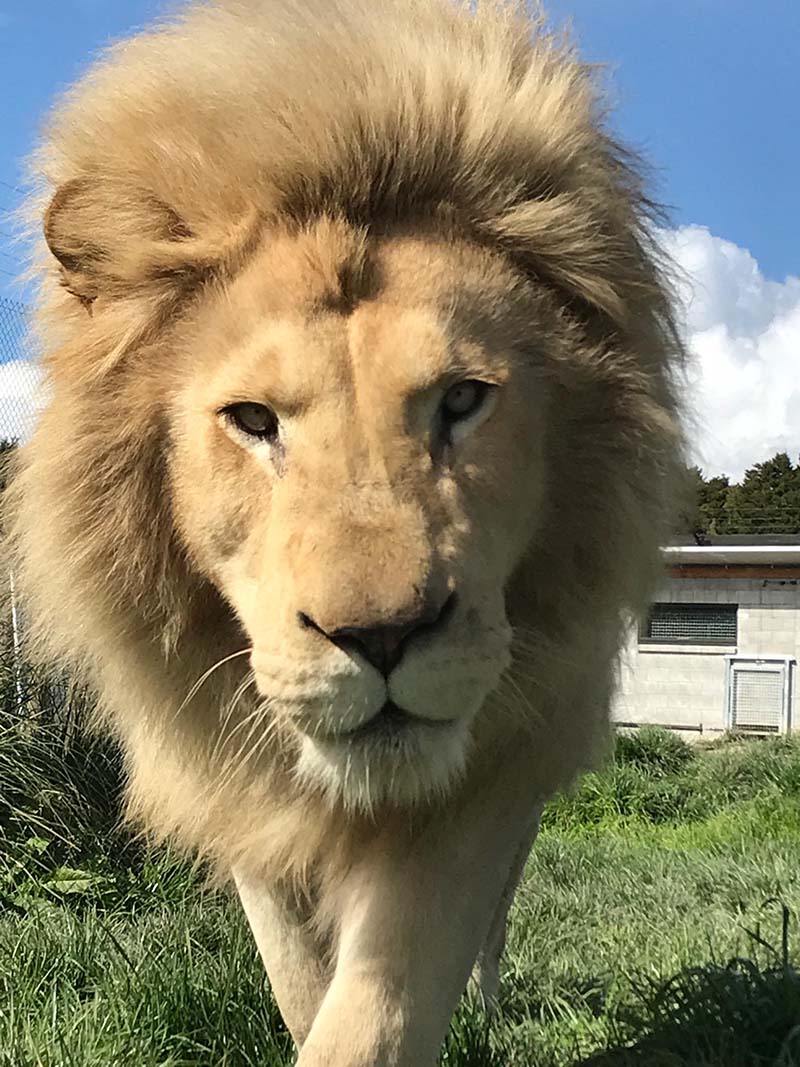Themba
Male White African Lion
Themba was born to the pride here at Kamo Wildlife Sanctuary on 11 December 2006. He’s a confident male willing to stand his ground. These characteristics ensure him a chance of becoming the natural King-pin at Kamo Wildlife Sanctuary.
White African lions were the main pride at Kamo Wildlife Sanctuary under previous ownership, and they remain a beautiful variant of the African lion species living at KWS. White lions are found in the wild but rarely survive and are more common in captivity. Known as Leosistic they lack pigmentation but are not albino. To produce white lions, both parents must possess a genetic mutation.
Themba is a slightly whiter lion, and is often at the fence next to the pride, and in the wild would be challenging for leadership.
- The scientific name for the African Lion species is Panthera leo
- African Lions are the second largest cat species in the world and are found across 28 African countries
- They live on the grassy plains of the savannah, on grass lands, and also in forested environments, mainly in Southern and Central Africa
- The roar of a lion can be heard as far away as 8 kilometres
- African lions have 30 teeth, and a very rough tongue which could remove your skin in just a few licks
- In a lion’s mouth, there are four huge canine teeth that can grow up to seven centimetres long which helps them tear skin and rip meat
- They also have sharp carnassials at the back of their jaws which scissor their dinner like a knife
- Right at the front of a lion’s mouth is a set of small incisors which they use to hold and rip their food.
- Lions have a very big bite at up to 28 centimetres
- African Lions live up to 16 years in the wild but in captivity often reach 25-30 years.
- A big male African Lion like Themba can weigh in at up to 250kgs
- Lions are the only ‘social’ cat and live in family groups called prides
- A pride can include up to 30 lions
- Big cat species are dying out around the planet as their habitats are being claimed by humans, illegal wildlife hunting and trading, and conflict with humans (sometimes they rob farmer’s flocks which results in them being hunted and shot).
- Panthera leo has lost almost 80% of the environment they used to have in which to roam in just 100 years, and they have disappeared entirely from 26 African countries.



